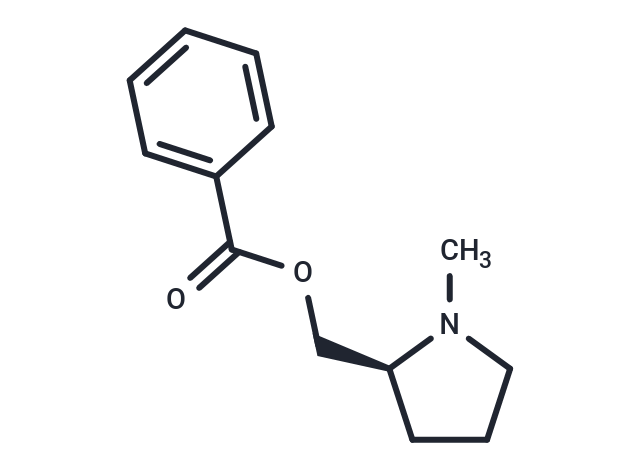Shopping Cart
Remove All Your shopping cart is currently empty
Your shopping cart is currently empty
(S)-UFR2709 is a competitive antagonist of the nicotinic acetylcholine receptor (nAChR), showing greater affinity for α4β2 nAChRs over α7 nAChRs. It effectively reduces anxiety, ethanol consumption, and ethanol preference in alcohol-preferring rats, functions as an anxiolytic agent, and holds potential for investigating nicotine addiction.

| Pack Size | Price | USA Warehouse | Global Warehouse | Quantity |
|---|---|---|---|---|
| 5 mg | $970 | 1-2 weeks | 1-2 weeks |
| Description | (S)-UFR2709 is a competitive antagonist of the nicotinic acetylcholine receptor (nAChR), showing greater affinity for α4β2 nAChRs over α7 nAChRs. It effectively reduces anxiety, ethanol consumption, and ethanol preference in alcohol-preferring rats, functions as an anxiolytic agent, and holds potential for investigating nicotine addiction. |
| In vitro | Brain nicotinic acetylcholine receptors (nAChRs) are a heterogeneous family of pentameric acetylcholine-gated cation channels, serving as molecular targets for treating alcohol abuse and dependence[1]. |
| In vivo | (S)-UFR2709 at concentrations of 50-100 μg/ml, initially exposed for 3 minutes and then held for an additional 5 minutes, leads to a reduction in bottom dwelling in the NTT test, with the compound showing a significant, dose-dependent decrease in bottom dwelling times to 52.9 and 87.0 seconds at 50 and 100 μg/ml, respectively. Additionally, (S)-UFR2709 at the same concentrations reduces nicotine-evoked mRNA expression of the α4 nACh receptor subunit in adult zebrafish, though its effect on the α4 subunit is less pronounced. When administered intraperitoneally at dosages ranging from 1-10 mg/kg daily for 17 days in high-alcohol-drinking UChB rats, (S)-UFR2709 significantly lowers ethanol consumption and preference in a dose-dependent manner, with the most successful dosage being 2.5 mg/kg, which results in a 56% reduction in alcohol consumption. This treatment does not impact the weight or locomotor behavior of the rats. |
| Synonyms | (S)-UFR2709 |
| Molecular Weight | 219.284 |
| Formula | C13H17NO2 |
| Cas No. | 1431628-22-6 |
| Smiles | CN1CCC[C@H]1COC(=O)c1ccccc1 |
| Relative Density. | 1.079 g/cm3 (Predicted) |
| Storage | Powder: -20°C for 3 years | In solvent: -80°C for 1 year | Shipping with blue ice/Shipping at ambient temperature. |
| Size | Quantity | Unit Price | Amount | Operation |
|---|

Copyright © 2015-2026 TargetMol Chemicals Inc. All Rights Reserved.